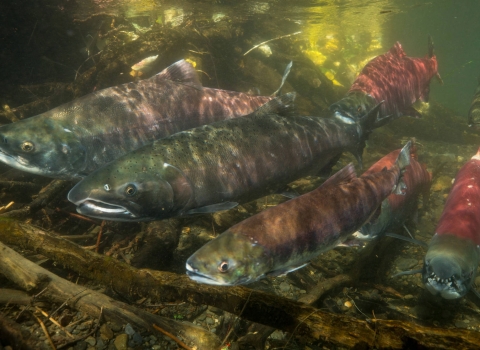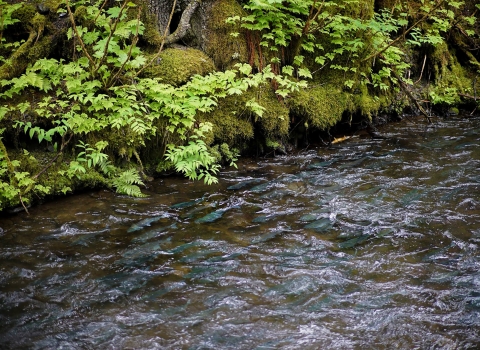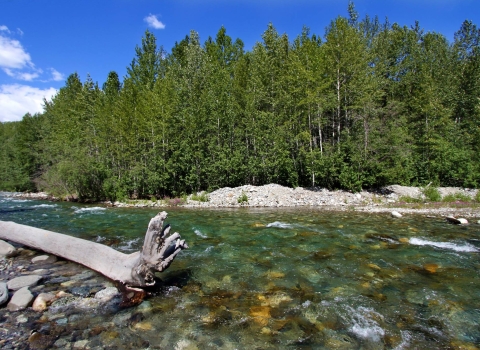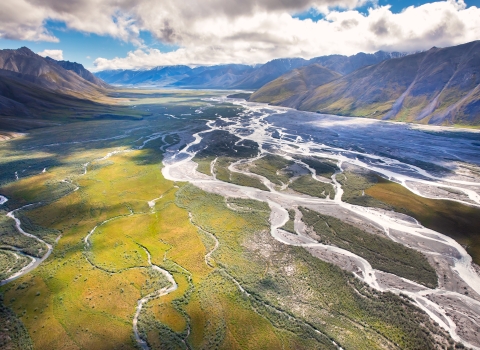Projects and Research
Kenai Fish and Wildlife Conservation Office Fisheries Branch staff monitor fish populations and stream temperatures within the Refuge and Habitat Branch staff work to restore fish passage fish passage
Fish passage is the ability of fish or other aquatic species to move freely throughout their life to find food, reproduce, and complete their natural migration cycles. Millions of barriers to fish passage across the country are fragmenting habitat and leading to species declines. The U.S. Fish and Wildlife Service's National Fish Passage Program is working to reconnect watersheds to benefit both wildlife and people.
Learn more about fish passage and streambanks downstream and across the Kenai Peninsula.
This project is designed to continue to support and sustain salmon recovery, improve fishery resources, prioritize fish passage enhancement projects, manage human uses, prioritize strategic habitat protections, and prevent habitat fragmentation. The information garnered from this project will provide science-based decision support information to help inform future habitat conservation work in...
This project utilizes Forward Looking InfraRed (FLIR) data to detect temperature variation and impacts on spawning distribution of Chinook and Coho Salmon returning to the Kenai Peninsula's Funny River and Moose River in Alaska. Thermal imagery has been used to make assumptions about critical fish habitat and suboptimal temperatures often based on a single flight. This study seeks to further...
Temperature is one of the most important environmental factors controlling the distribution and behavior of fishes. Fish often inhabit a specific thermal niche where they optimize physiological performance. Although water temperature requirements and preferences vary according to individual species and life stage, of interest and relevance to us is continual engagement in field...
Preserving water quality is one purpose of every National Wildlife Refuge in Alaska. Land cover and use can affect the water quality of rivers, lakes and other surface waters. Potential sources of point- and non point-source pollution, such as communities and resource development projects, can threaten refuges' waters. Baseline water quality data provide a benchmark for identifying and...
As part of the National Wetlands Inventory, we are mapping and digitizing high priority wetlands in Alaska’s 16 National Wildlife Refuges.
The U.S. Fish and Wildlife Service is the principal federal agency tasked with providing public information on the status and trends of our Nation's wetlands. Our National Wetlands Inventory provides detailed information...
Invasive Species Program staff collaborate with Alaska's National Wildlife Refuge, the State of Alaska and other partners to protect Alaska's lands and waters by working to detect invasive species infestations while they’re still relatively small and have the highest chance of being successfully eradicated. We survey terrestrial, freshwater, and marine environments for invasive plants and...





